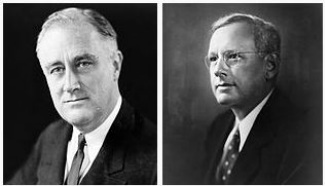 A sampling error led to an embarrasing and wrong prediction. A sampling error led to an embarrasing and wrong prediction. Tags: methodology/statistics, politics/election/voting, quantitative methodology, sampling bias, sampling frame, straw poll, survey research, 00 to 05 mins Year: 1989 Length: 1:03 Access: YouTube Summary: A fundamental part of survey research is collecting a representative sample. This video illustrates the importance of this by showing how a biased sampling procedure led to a huge prediction error in the 1936 presidential election between Franklin D. Roosevelt and Alf Landon. Even though one sample size was enormous (more than 2.3 million respondents), it could not fix a fundamentally flawed sampling procedure, and incorrectly predicted that Landon would win the election. The sampling frame (the list of people from whom the sample was chosen) was built from lists of automobile and telephone numbers, which many low and middle income voters could not afford in the 1930's. Therefore, its sample reflected people with higher class backgrounds and "missed the larger pro-Roosevelt sentiment among low-income voters." In short, it did not reflect the population, leading to a very embarrassing and fatal error for the polling company (especially since Roosevelt won with 62% of the vote). This is also known as a straw poll, or a poll used to gauge political opinions that is conducted poorly or without utilizing proper sampling methods. At the same time, Gallup conducted a poll and correctly predicted the winner, based on a fraction of the sample size (50,000 respondents). Note this clip is from Program 14 of the Against All Odds series, and even more can be found here under the tab "Select a Video Unit." Submitted By: Bhoomi K. Thakore
2 Comments
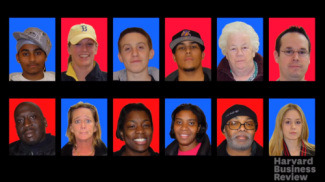 This study reveals the dynamics and costs of ignoring race. This study reveals the dynamics and costs of ignoring race. Tags: methodology/statistics, race/ethnicity, color-blindness, 00 to 05 mins Year: 2013 Length: 4:30 Access: YouTube Summary: This experimental study reveals how people avoid mentioning race and how other people perceive this avoidance. Using the board game Guess Who? as a model, Dr. Michael Norton set up pairs of volunteers each with an array of faces (see image). One participant selects a face, and their partner has to ask yes-or-no questions about the person to see how quickly they can guess who the person is. While half of the faces in the study were white and half were black (thus making a question about race very pertinent), people often avoided asking about race. In fact, only 57% of people used the word "black" or "African-American" during the game when playing with white partners; only 21% did so when playing with a black partner. Norton theorizes that whites avoided using the racial terms to avoid appearing like they cared about race or were racist. A paradoxical finding is that, when a participant did not ask about race, their partner perceived them to be more biased. Norton also found an effect of age. Children aged 7-8 were more likely to ask about race, but children aged 9-10 asked about race much less; in other words, they had already been socialized to be color-blind (i.e. an ideology that believes race to no longer be important in shaping social outcomes and which encourages people to ignore race and racial difference). When dots were introduced to the game, "players did not hesitate to ask about black dots, suggesting that the effect shown in previous games was about race, not color." In other words, it is the social dynamics surrounding race that influenced if participants referenced color in the game. As an Associate Professor of Business Administration, Norton is interested in how this applies to the workplace; he notes that "like players in the game, workers try to avoid talking about race" and therefore it "ends up impeding communication" (this finding would interest organizational and industrial sociologists as well). From a macro sociological perspective, there are further implications related to power and inequality. As Bonilla-Silva (2013) argues in Racism Without Racists, by ignoring racial difference--or by being colorblind--we help perpetuate and reinforce the system of white privilege. These micro-interactions ultimately help shape macro structures and inequalities. The study is also a great illustration of experimental methods used in sociology. Submitted By: Paul Dean 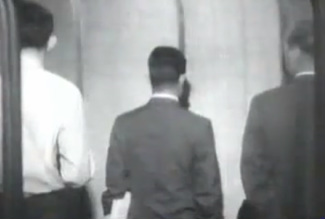 Social conformity is tested in this elevator experiment. Social conformity is tested in this elevator experiment. Tags: methodology/statistics, psychology/social psychology, asch conformity experiments, breaching experiments, harold garfinkel, norms, solomon asch, 00 to 05 mins Length: 2:31 Year: 1962 Access: YouTube Summary: This clip from a 1962 episode of Candid Camera is based on a series of social psychological experiments called the Asch conformity experiments. Originally directed by Solomon Asch in the 1950s, these experiments were designed to examine how individuals conform to group dynamics. In this episode, unsuspecting subjects enter into an elevator where Candid Camera actors are all facing backwards, and we watch as a hidden camera captures the non-actor individuals slowly turning around to conform with the group. Sociologist Harold Garfinkel used a similar method to explore various dimensions of social rules and sanctions. Specifically, he used breaching experiments as a method to demonstrate the presence of social norms, arguing that we can test the existence of social norms and expectations by violating them. This clip would be useful for introducing Garfinkel's famous breaching experiments, and would pair well with assignments that require students to conduct their very own breaching experiment, such as this assignment on The Sociological Cinema. Submitted By: Valerie Chepp 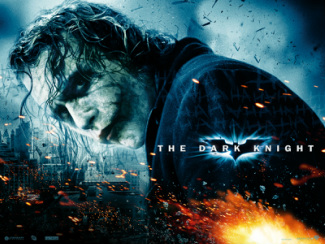 The Joker terrorizes his victims with a prisoner's dilemma The Joker terrorizes his victims with a prisoner's dilemma Tags: crime/law/deviance, methodology/statistics, theory, fiction, game theory, mathematical sociology, prisoner's dilemma, rational choice theory, 00 to 05 mins Year: 2012; 2008 Length: 2:59; 4:52 Access: clip 1; clip 2 Summary: In sociology, game theory is often deployed by those working from a rational choice theoretical perspective. As such, it is primarily concerned with the rational and strategic interactions between agents and has been applied to analyzing a broad range of situations, from criminal confessions to the stockpiling of nuclear arms. One insight upon which the theory is based is that while a given course of action may appear to be most rational or beneficial from the perspective of a single actor, the action may be less beneficial when considering the possible actions taken by other actors. The first clip examines the prisoner's dilemma as the paradigmatic example of game theory. Police bring two suspects, Xavier and Yoshi, to the police station and place each in a different room. The police then present each suspect with their dilemma: a) If one confesses and turns on the other, the confessor will go free and the other will get 10 years in prison; b) if they both confess, each gets 8 years in prison; and c) if neither confess, they will each spend only a month in prison on a lesser charge. The suspects have a choice between cooperation and defection, and as the clip explains, given that neither suspect is able to coordinate with the other, each will likely turn on the other as the most rational course of action. A second illustration (i.e., clip 2) of this type of dilemma, or "game," comes from the 2008 film The Dark Knight. In this clip Batman's nemesis, the Joker, attaches explosives to two ferries. On each ferry is the detonator capable of blowing up the other ferry, and the occupants of each ferry are told the only way they can assure their survival is to be the first to press the detonator. One may deem this comic book scenario to be too far fetched, and the situation presented to the prisoners may be dismissed as an inaccurate model of law enforcement practices; however, I think game theory continues to enjoy surges in popularity precisely because it is readily applicable to such a broad range of social situations. In his 2004 novel, Forty Signs of Rain, Kim Stanley Robinson creates a character who endures a frustrating commute to work in Washington D.C. and applies game theory to make sense of his misery, "In traffic, at work, in relationships of every kind—social life was nothing but a series of prisoners' dilemmas. Compete or cooperate? Be selfish or generous?....By and large Beltway drivers were defectors." Submitted By: Lester Andrist 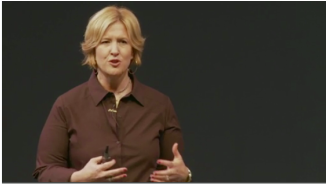 Brené Brown discusses qualitative research methods. Brené Brown discusses qualitative research methods. Tags: emotion/desire, methodology/statistics, qualitative research, vulnerability, 11 to 20 mins Year: 2010 Length: 20:20 Access: TED Talks Summary: A “researcher storyteller,” Brené Brown colorfully discusses her experience as a qualitative researcher in this TED Talk. Brown explores the personal and professional journey she's undertaken as a qualitative social science researcher, explaining her revelation that “stories are data with a soul.” Self-depreciating at times, Brown humorously and powerfully outlines her changing research perspective from “if you can’t measure it, it doesn’t exist” to becoming comfortable “lean[ing] into the discomfort of the work.” Specifically, Brown talks about her research on shame and vulnerability, in which she drew upon such methods as interviews, focus groups, and content analysis, accumulating “thousands of pieces of data.” Her methodological choices stemmed directly from her research query, which required her to understand how people give purpose and meaning to their lives. In her discussion, Brown brilliantly displays the vulnerability of doing qualitative work, as the “researcher storyteller” can easily become professionally and personally affected by her findings. I show Brown’s TED Talk to a few different sociology classes, including Introduction to Research Methods, Introduction to Sociology, and Contemporary Social Problems for three reasons. First, Brown’s presentation demonstrates to undergraduates the potential for qualitative methodologies to be fun, creative, non-linear, and profound. Second, the clip shows how social science research can measure—using qualitative methods such as interviews, focus groups, and content analysis—ostensibly tricky “variables” such as wholeheartedness and love. After showing the talk, I have the class discuss “variables” that they are now inspired to sociologically research, via qualitative methods. Finally, Brown validates the potential for social scientists to experience vulnerability when conducting qualitative research; this experience can potentially lead researchers to use their work toward remedying the social problems they study by connecting to their subject matter on an empathetic level. Submitted By: Beverly M. Pratt 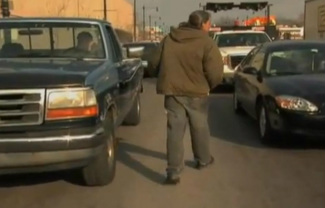 Diablo Steve panhandles at a busy intersection Diablo Steve panhandles at a busy intersection Tags: class, crime/law/deviance, marriage/family, methodology/statistics, drugs, ethnography, homelessness, visual ethnography, substance abuse, 06 to 10 mins Year: 2013 Length: 8:23 Access: YouTube; Vimeo Summary: This observational film from filmmaker Greg Scott and a crew of sociologists chronicles the daily lives of Diablo Steve and Sapphire Pam, a homeless and heroin-addicted married couple. Beginning with a brief wedding anniversary celebration, the camera follows Steve and Pam as they go about their daily routine, which includes a visit to a "shooting gallery," where they inject their "medicine," and a visit to a busy intersection, where they carry out their panhandling "hustle." The film sticks with Steve and Pam as they navigate various modes of transportation throughout the day, until finally setting up camp at a homeless shelter, where they attempt to get some relief in a momentary and fleeting setting of “home.” Although the film neither expresses judgement nor engages in the kind of overt analyses one typically finds in films that include interviews and narration, assistant videographer Thom Fredericks notes that "Ultimately the film represents an effort to analyze marriage and the ways in which the meaning of marriage has changed in society." In the context of a sociology class, instructors can easily draw on the film as a basis for contemplating a range of other topics, including homelessness, substance abuse, and deviance. The film is also an excellent example of visual ethnography, which is a form of ethnographic research that incorporates photography, video, or hypermedia. Submitted By: Thom Fredericks 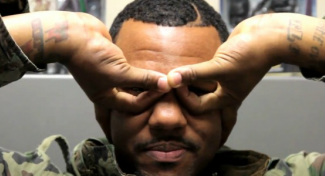 The Game shows how social context shapes a sign's meaning. The Game shows how social context shapes a sign's meaning. Tags: culture, discourse/language, methodology/statistics, clifford geertz, ethnography, signs, social interaction, thick description, 00 to 05 mins Year: 2013 Length: 5:32 Access: YouTube Summary: [Trigger warning: this clip includes explicit language and gang references.] In this instructional video, the rapper The Game demonstrates the proper technique for throwing up a variety of different gang signs. According to the clip's introductory screen shot, the video is intended "For all you wanna be gangsters, internet thugs, or just inquiring minds," and is followed by the warning message: "Don't try these outside your home." Viewers should take heed and, about midway through the clip, The Game underscores the seriousness and potential consequences of throwing up gang signs, which include murder. From a teaching perspective, however, the video's message can be used to illustrate Clifford Geertz's (1973) discussion of thick description, an ethnographic technique of narratively contextualizing social interaction using detailed description. According to Geertz, a thickly described narrative is important because meanings are multilayered, and simply describing an interaction at the surface may not fully capture the "true" meaning of the situation. The Game's discussion of "the b's and the p's of gang-banging" demonstrates the various meanings different gang signs can have in different contexts, including the height at which you throw up your gang sign, how far back you push your fingers (e.g., a "b" vs. an "Okay" sign), the neighborhood in which you display the sign, and even the process by which you get your fingers into place. All of this carries meaning, as it can demonstrate such things as gang membership authenticity or time spent in the penitentiary. The message contained within The Game's tutorial parallels Geertz's classic example of a wink to elucidate how seemingly similar signs can have different meanings depending on the social context. As Geertz argues, depending upon how it is performed and the motivation behind the performance, a wink could be a conspiratorial sign to a friend, an eye twitch, or a parody of someone else winking. By thickly describing the situation in which the wink occurs, the researcher can convey the subtleties of meaning embedded in the interaction. As is clear from The Game's video lesson, social context is central to the multilayered meanings associated with gang signs. By thickly describing the social context in which a gang sign is displayed, an ethnographer can begin to capture these nuanced meanings. Submitted By: Valerie Chepp  Two "thieves"—one white, one black—try to steal a bike in public. Two "thieves"—one white, one black—try to steal a bike in public. Tags: crime/law/deviance, methodology/statistics, prejudice/discrimination, race/ethnicity, racial profiling, racism, social experiment, white privilege, 00 to 05 mins Year: 2010 Length: 4:41 Access: YouTube Summary: In this episode of the American television show What Would You Do?, two different actors stage a bike theft in a public park. Both actors are teenage boys, about the same age, wearing similar clothes, using the same set of burglary tools in the same park, around the same time of day, trying to cut off the lock of the same bike; however, one of the actors is black and the other is white. A hidden camera documents the different reactions of the people walking by. The variation in people's reactions can help to illustrate the concept of racial profiling. Racial profiling involves using an individual's race or ethnicity as a basis for determining whether a person is engaged in illegal activity. Often racial profiling refers to an activity practiced by law enforcement; however, in this video we see ordinary people engaged in this form of discrimination. Viewers can be encouraged to compare and list the differeces in people's reactions, and talk about whether (and how) these differences constitute racial profiling. Further, viewers can think about the implications of racial profiling, that is, why does it matter if racial profiling occurs? At the end of the clip, a young and stereotypically attractive white woman pretends to be stealing the bike. Why might people's reactions to this thief be so different from those who reacted to the boys cutting the bicycle lock? This video can also be used to illustrate an example of a social experiment; for other examples, click here. Submitted By: Joanna 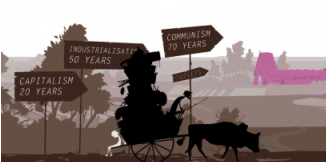 "Poor Us" examines the changing world of poverty. "Poor Us" examines the changing world of poverty. Tags: capitalism, class, globalization, historical sociology, inequality, methodology/statistics, political/economy, absolute poverty, antônio conselheiro, charity, colonialism, comparative historical analysis, industrial revolution, poorhouse, relative poverty, social history, welfare state, workhouse, 21 to 60 mins Year: 2013 Length: 58:05 Access: YouTube Summary: This exquisitely animated documentary tells a sweeping social history of world poverty. You, the viewer, are the protagonist in this film floating through the meandering jet stream of world history. "If we want to make poverty history," the narrator explains, "then first, we need to understand the history of poverty." ● The documentary appropriately begins in prehistory (2:35), and in a more or less linear fashion, moves through humanity's early large scale civilizations, including ancient Egypt (4:40) and ancient Greece (5:40). Zipping forward to the Middle Ages, the story unfolds again in Cairo (8:20), and then lingers in Paris of the same period (10:50). The history of colonialism is woven into the story with a look at the Spanish conquest of the Inca Empire (14:20), the Portuguese conquest of West Africa (16:20 and 34:40), and British colonial rule in India (36:00). Poverty in a neocolonial context is later examined in Ghana (38:50 and 43:55), and China makes appearances as the site of both model relief efforts and tragic famine (18:30 and 43:20). At the 20:30 mark the story returns to Western Europe in order to consider the impact of the Industrial Revolution on poverty, and then moves toward a conclusion which contemplates the changes wrought by globalization. ● While this 58-minute film understandably fails to deliver a truly exhaustive account of the the world-historical processes associated with poverty, the film would be an excellent tool for illustrating comparative historical analysis in sociology. Systematic comparison is of course central to comparative historical work, and this film succeeds in illustrating the importance of comparison by briefly drawing on eighteenth century China as a rare instance where prosperity for some didn't necessarily come at the cost of desperate poverty for others. What does the film's analysis of poverty gain by including this "negative" case in the story? One answer is that the case of China complicates the viewer's understanding of poverty by exposing its causes as far less determined and far more contingent. Submitted By: Lester Andrist  W.E.B Du Bois is appointed Honorary Emeritus Professor of Sociology Tags: du bois, methodology/statistics, prejudice/discrimination, race/ethnicity, theory, africana studies, public sociology, 21 to 60 mins Year: 2012 Length: 36:51 Access: YouTube Summary: On February 17th, 2012 three intellectual panels convened at the University of Pennsylvania in conjunction with the posthumous appointment of Dr. William Edward Burghardt Du Bois as Honorary Emeritus Professor of Sociology and Africana Studies. The video features a wide array of remarks and reflections from a number of intellectuals, including Tukufu Zuberi, Lawrence D. Bobo, Mary Patillo, Anthony Monteiro, Howard Winant, and Elijah Anderson. Excerpts from the video can be readily used to spur discussions about particular aspects of Du Bois' scholarship. The video begins with sociologist Tukufu Zuberi (1:40 to 4:10) outlining many of Du Bois' early accomplishments, including the fact that in 1895 he became the first African American to receive a PhD in history from Harvard University. Highlighting Du Bois' methodological contributions, sociologist Aldon Morris (4:45 to 6:00) discusses Du Bois' advancement of empirical methodologies, and later in the video Zuberi (10:00 to 11:10) notes that Du Bois arrived at a number of his remarkable insights in Black Reconstruction of Democracy in America, despite being barred from primary source materials due racial segregation. Underscoring the enduring significance of Du Bois' work, sociologist Howard Winant (13:40 to 15:10) notes the fact that Du Bois reclaimed the narrative that African Americans were central in the movement to achieve an advanced democracy, and Winant explains that Du Bois' work powerfully argues that Blacks were also centrally involved in their own emancipation. At the 11:10 mark, Zuberi argues for the significance of Du Bois' work in the face of persistent racism within the academy. He notes that despite the fact that Du Bois' work foreshadowed a number of celebrated sociological works from authors like Immanuel Wallerstein, Barrington Moore, Jr., and Theda Skocpol, Du Bois is not cited by these authors. Finally, a number of panelists passionately argue that Du Bois was one of the first truly public intellectuals. For instance, Stephanie Y. Evans (6:00 to 6:50) likens Du Bois to a conductor, facilitating communication and exchange between intellectuals and non-intellectuals alike. At the 6:50 mark, Mary Patillo similarly discusses the way Du Bois' concepts have permeated outside the academy, and how his work has contributed to black studies movements that seek to make connections between campus and off-campus struggles. Submitted By: Tukufu Zuberi |
Tags
All
.
Got any videos?
Are you finding useful videos for your classes? Do you have good videos you use in your own classes? Please consider submitting your videos here and helping us build our database!
|
 RSS Feed
RSS Feed
